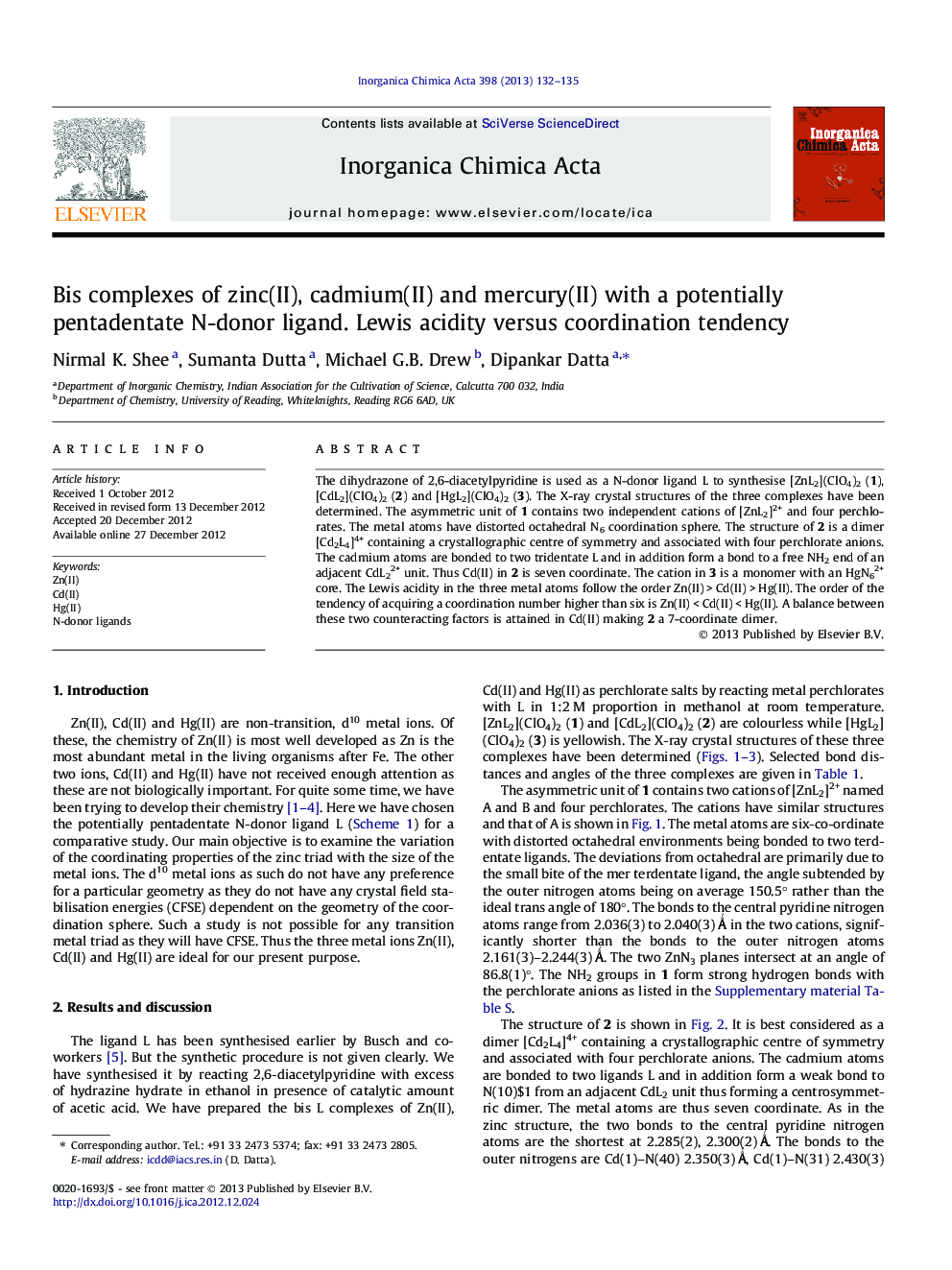| کد مقاله | کد نشریه | سال انتشار | مقاله انگلیسی | نسخه تمام متن |
|---|---|---|---|---|
| 1312351 | 1499189 | 2013 | 4 صفحه PDF | دانلود رایگان |

The dihydrazone of 2,6-diacetylpyridine is used as a N-donor ligand L to synthesise [ZnL2](ClO4)2 (1), [CdL2](ClO4)2 (2) and [HgL2](ClO4)2 (3). The X-ray crystal structures of the three complexes have been determined. The asymmetric unit of 1 contains two independent cations of [ZnL2]2+ and four perchlorates. The metal atoms have distorted octahedral N6 coordination sphere. The structure of 2 is a dimer [Cd2L4]4+ containing a crystallographic centre of symmetry and associated with four perchlorate anions. The cadmium atoms are bonded to two tridentate L and in addition form a bond to a free NH2 end of an adjacent CdL22+ unit. Thus Cd(II) in 2 is seven coordinate. The cation in 3 is a monomer with an HgN62+ core. The Lewis acidity in the three metal atoms follow the order Zn(II) > Cd(II) > Hg(II). The order of the tendency of acquiring a coordination number higher than six is Zn(II) < Cd(II) < Hg(II). A balance between these two counteracting factors is attained in Cd(II) making 2 a 7-coordinate dimer.
The bis complex of the dihydrazone of 2,6-diacetylpyridine with Cd(II) is a dimer with a CdN72+ core while the corresponding complexes of Zn(II) and Hg(II) are monomer with a MN62+ core. This is a result of balancing of two counteracting factors – tendency for coordination number higher than six and the Lewis acidity of the metal ions.Figure optionsDownload as PowerPoint slideHighlights
► Bis complexes of d10 metal ions Zn(II), Cd(II) and Hg(II) with a N-donor ligand.
► X-ray crystal structures.
► The complex of Cd(II) is a dimer while the others are monomers.
► Lewis acidities of Zn(II), Cd(II) and Hg(II).
► Coordination tendencies of the three metal ions.
Journal: Inorganica Chimica Acta - Volume 398, 24 March 2013, Pages 132–135